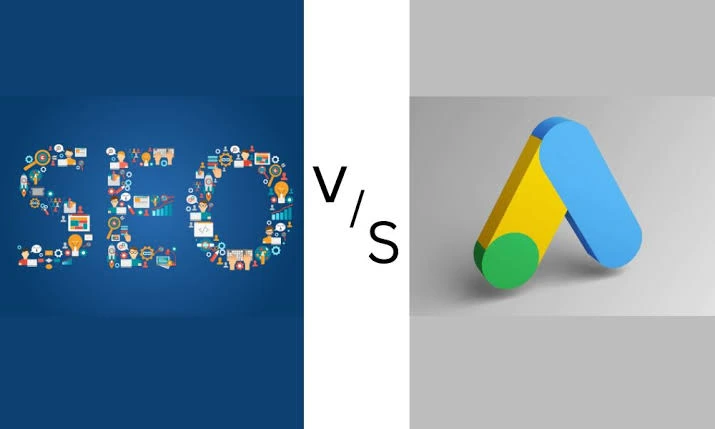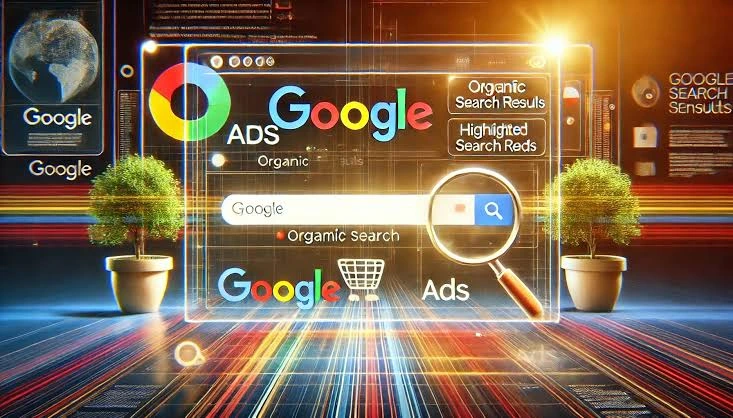Google Ads and SEO for Maximum ROI
In today’s competitive digital landscape, businesses often face the dilemma of choosing between Google Ads and organic SEO to drive traffic and maximize ROI. Although both strategies offer distinct advantages, the most successful digital marketing campaigns typically blend the two. By strategically balancing paid advertising with organic search optimization, businesses can benefit from the immediate visibility of ads while simultaneously building a strong, long-term foundation through SEO. Ultimately, this integrated approach is key to achieving sustainable growth and maximum return on investment.
Understanding Google Ads and Organic SEO
Google Ads
Google Ads is a paid advertising platform that places your business at the top of search engine results pages (SERPs) instantly. It operates on a pay-per-click (PPC) model, where you pay for every click on your ad.
Advantages:
- Immediate visibility and traffic.
- Precise targeting options based on demographics, keywords, location, and behavior.
- Control over budget and performance.
Challenges:
- Requires continuous investment.
- Ad performance diminishes once the campaign stops.
Organic SEO
Organic SEO involves optimizing your website and content to appear naturally in search engine results pages (SERPs), without paying for placement. It focuses on improving relevance, site structure, and content quality to attract traffic over time through unpaid strategies.
Advantages:
- Sustainable and cost-effective in the long run.
- Builds trust and credibility among users.
- Generates consistent traffic over time.
Challenges:
- Results take time to materialize.
- Requires ongoing optimization and content creation.
Why Balance Both?
Neither Google Ads nor SEO alone can fully address the diverse needs of a business. Together, they create a complementary strategy:
Immediate Results (Ads) + Long-Term Sustainability (SEO): Ads provide instant traffic, while SEO builds a steady stream of organic visitors.
Increased SERP Real Estate: Ranking organically while running ads doubles your visibility and credibility.
Data Sharing for Insights: Ad performance can inform SEO strategies, and vice versa, enhancing campaign effectiveness.
Strategies for Optimizing Google Ads and SEO for Maximum ROI
1. Use Ads to Test and Validate SEO Keywords
Google Ads campaigns provide immediate data on high-performing keywords. Use this information to optimize your SEO strategy, focusing on keywords that drive traffic and conversions.
2. Bid on Branded Keywords Strategically
While organic SEO often captures branded searches, running ads on branded keywords ensures competitors don’t divert your traffic. It also reinforces your brand’s dominance in search results.
3. Align Content with Ad Campaigns
To maximize results, ensure that the landing pages used in your Google Ads campaigns are also SEO-friendly. Start by creating high-quality content that’s optimized for the same keywords targeted in your ads. As a result, this synergy not only enhances the user experience but also contributes to improved organic search rankings.
4. Invest in Remarketing
Google Ads enables you to retarget users who have previously interacted with your website. By combining this feature with SEO-driven traffic, you can effectively re-engage organic visitors who didn’t convert during their initial visit. This integrated approach helps increase conversions and reinforces brand presence.
5. Leverage Local SEO and Ads
For local businesses, combining local SEO—such as optimizing your Google My Business profile—with geographically targeted ads can significantly boost local search visibility. While ads quickly capture attention and drive immediate traffic, local SEO, on the other hand, helps build credibility and trust over time. Together, they create a powerful strategy for dominating local search results.
6. Optimize Ad Spend with Organic Insights
To improve efficiency, use organic SEO analytics to identify high-performing keywords or content. Once identified, consider reducing ad spend on these well-performing areas. Instead, reallocate the budget to keywords or segments where organic visibility is lower, ensuring a more balanced and cost-effective marketing strategy.
7. Monitor and Adjust Regularly
To maintain efficiency, use tools like Google Analytics to monitor the performance of both Google Ads and SEO efforts. Specifically, track key metrics such as click-through rate (CTR), conversion rates, and cost-per-click for ads. At the same time, evaluate organic rankings and traffic trends. Based on these insights, make data-driven adjustments to your campaigns, ensuring continuous improvement and optimal results.
Benefits of a Balanced Strategy
- Maximized Visibility: Appearing in both paid and organic search results establishes authority and increases the likelihood of clicks.
- Enhanced Credibility: Users trust organic results more, but seeing ads alongside builds confidence in your brand.
- Higher Conversions: Combining traffic from both channels increases the pool of potential customers.
- Efficient Resource Allocation: Insights from one strategy can improve the other, leading to better ROI overall.
Common Pitfalls to Avoid
- Overlapping Efforts Without Strategy: Running ads and SEO campaigns on the same keywords without a clear plan can waste resources.
- Neglecting SEO for Ads: Over-reliance on ads can leave your website vulnerable if the ad budget is reduced or paused.
- Ignoring Mobile Optimization: Both ads and SEO need to cater to mobile users, as a significant portion of traffic comes from mobile devices.
Case Study: Success Through Balance
A mid-sized e-commerce business struggled with inconsistent traffic. By combining Google Ads and SEO, they achieved:
- Short-Term Wins: Google Ads brought immediate traffic, generating 30% more sales during the first month.
- Long-Term Gains: SEO efforts led to a 50% increase in organic traffic over six months, reducing dependency on ads.
- Cost Efficiency: Insights from high-performing ads helped refine the SEO strategy, lowering overall acquisition costs by 25%.
Conclusion
Balancing Google Ads and organic SEO is essential for maximizing ROI in digital marketing. While Google Ads offers instant visibility and quick results, SEO, on the other hand, lays a sustainable foundation for long-term growth. Therefore, by integrating both strategies and consistently optimizing them, businesses can drive more traffic, improve conversions, and ultimately achieve cost-effective success in today’s competitive online marketplace.


Leave a Reply